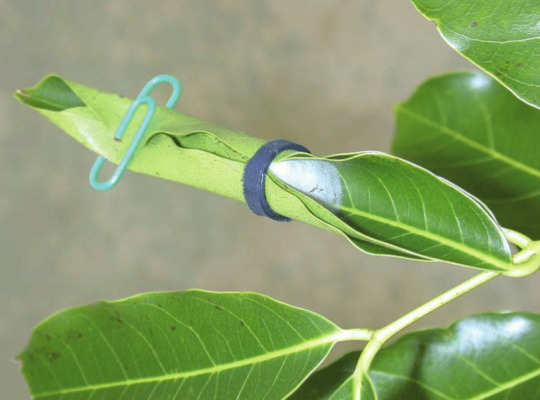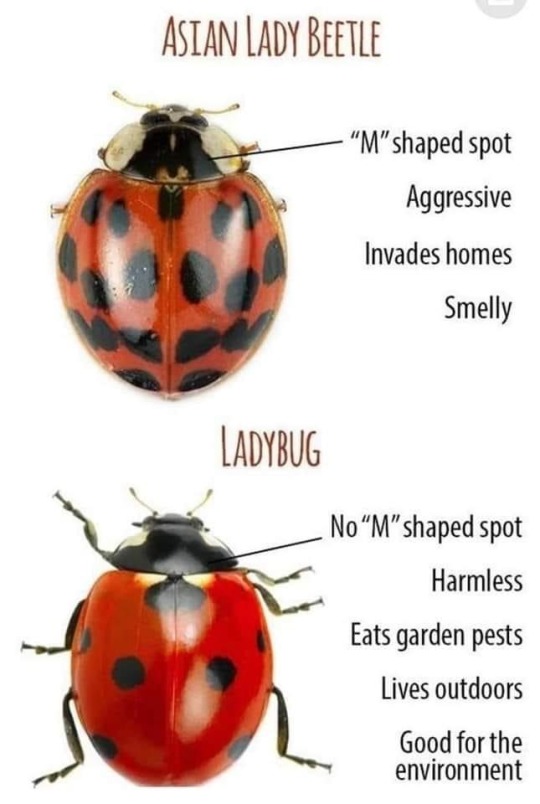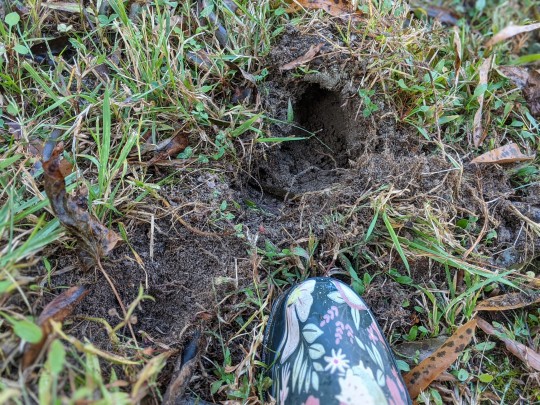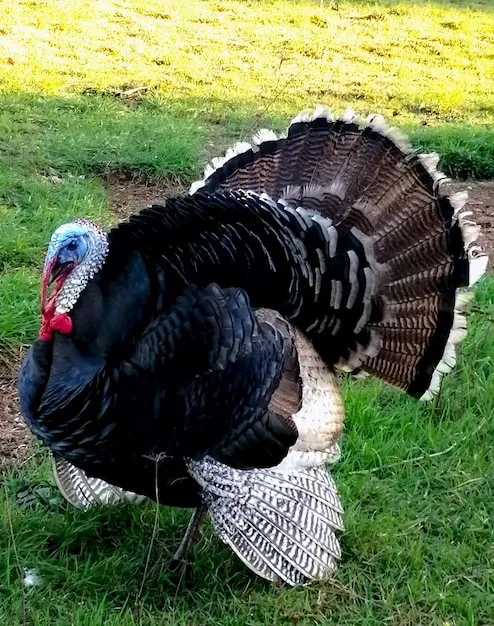#Farm Pest Control
Text
Protect Your Tomato Crop From Insect Infestation With Chester Boone’s!
#ChesterBoones #Tomato #Tomatoes #CropProduction #IPM #AGPestControl #CropPesticides #GrowSupplies #Horticulture #Floriculture #CEA #Hydroponics #Aeroponics #Plants #Crops #Greenhouses #Farms #Agriculture #AG #IndoorFarms #GrowRooms #GrowOps #Farmers #Farming #LosAngeles #LA #CA
0 notes
Text
Do you want weaver ants? Because that's how you get weaver ants!

Weaver ants use empty silk cocoons from wild silk moths as founding chambers. Empty cocoons from commercial silk production can even be used to attract queens. These ants play an important role in pest control in orchards and are desired by farmers.
(Source)

Method used by some farmers to attract weaver ant queens.
#ant#ants#weaver ants#pest control#natural pest control#antposting#myrmecology#insects#invertebrates#antkeeping#silk#silk moth#silk moths#natural silk#beneficial insects#fruit farming#fruit trees#gardening#moth#moths#entomology#bugs#lepidoptera#ant queen#queen ant#queen ants#bugblr#antblr#mothblr#farmblr
297 notes
·
View notes
Text

#homesteading#junko on the farm#garden#gardening#tips#junko#organic#insects#identification#bugs#ladybugs#pest control#pests#beetle#beetles
9 notes
·
View notes
Text
I am wondering about the vegan stance on animals killed for crop farming. For example, all broccoli farmers I've met poison or shoot rabbits and pukekos regularly to keep the crop safe. Almost every crop really, even onions get decimated by rabbits. Many restaurants that have broccoli or brocolini or similar are supplied from these farms, and I doubt it's advertised.
Is it different because these are wild animals, not domesticated ones? Maybe some ultra organic farms avoid killing rabbits, the ones that try to avoid killing even slugs, but I highly doubt any farm on the scale of using a tractor can claim no rabbits died in the process of farming.
#I'm not vegan but I find their points interesting#And I defend their right to be informed about the food they consume and how it was farmed#Should farms have a responsibility to disclose pest control methods?
2 notes
·
View notes
Text

Why is my yard full of Excavations, following the mole tunnels, and yet my dog can stop and stare intently at the ground this morning, ears cocked, and then dig only this much hole before coming up with a mole in her mouth?
24 notes
·
View notes
Text
Cranberry farming is hella cursed
So Cranberries float. This means they're grown in bogs, which are flooded for harvesting. Sounds weird, right? It gets weirder. Cranberry farms also invest in an innovative form of pest control known as wolf spiders, which immediately run for the tallest thing they can get to when the bogs are flooded. The tallest thing is often you. So you're wet, covered in large spiders and picking berries out of the water/mud/spider soup. Also you're probably not allowed to hurt the "fellow employees". So if you ever buy cranberries, take sadness in the sacrifices those poor farmers (and poor spiders) must make.
12 notes
·
View notes
Text
#agriculture#agtech#agritech#farming#technology#agriculture technology#digital farming#crop protection#remote sensing#pest control
1 note
·
View note
Text
Canistel (Egg Fruit) Farming: A Rare Highly Nutritious Fruit & Where To Purchase Seedlings
Canistel (Pouteria campechiana), commonly known as eggfruit, is a tropical fruit tree. Though the size and shape of this fruit can vary greatly from one tree to another, the most favorable trees produce large, sweet, yellow fruits with an oval shape. Having been most commonly compared to the texture of a hard-boiled egg (hence the common name), the roundish fruits are popular for their use in…

View On WordPress
#Canistel adaptation#Canistel climatic requirements#Canistel disease control#Canistel enthusiasts#Canistel farming#Canistel farming in Kenya#Canistel fertilization#Canistel growth regions#Canistel harvesting#Canistel Kenyan agriculture#Canistel Kenyan climate#Canistel local economies.#Canistel nutritional benefits#Canistel origin#Canistel pest management#Canistel plant care#Canistel planting#Canistel post-harvest handling#Canistel propagation#Canistel rare fruit#Canistel seedlings#Canistel seedlings availability#Canistel seedlings price#Canistel soil preferences#Canistel spacing#Canistel sustainable farming#Canistel tropical fruit#Egg Fruit cultivation#Farmer&039;s Trend Nursery#Farmer&039;s Trend Nursery contact
1 note
·
View note
Text
Best Fogging Systems in Gulf for greenhouse, Tea Industries, Mushroom Farms
#Fogging Systems in Gulf#Fogging Systems for greenhouse#Fogging Systems for Tea Industries#Fogging Systems for Mushroom farms#Pest control Fogging Systems in Gulf#manufacture of Fogging Systems in Gulf#Suppliers of Fogging Systems in Gulf#https://mistcoolingsystemsgulf.com/portfolio/fogging-systems
0 notes
Text




Chicken: Original Sustainable Farmer
#redbubble#permaculture#chicken#sustainable fashion#sustainable living#classic tshirt#sustainable farming#gardening#organic gardening#pest control#colorful#gardener#easter#farm animals#farmer#organic farming#funny quotes#permaculture design
0 notes
Text
Growing Crops Free of Insect Pests with Minimal Risk AG Pesticides
AG Insecticides for use on sensitive crops such as tomatoes, cucumbers, sweet peppers, and hemp, are limited to those that conform with the Environmental Protection Agencies (EPA) regulations for Minimum Risk Pesticide Products. The categories of pesticide products that qualify as minimum risk include detergents, soaps, oils, herbs like citronella or cloves, acids, micronized minerals, and even dried blood. Many products on the market are combinations of these approved ingredients.
#ChesterBoones #CropProduction #IPM #AGPestControl #CropPesticides #GrowSupplies #Horticulture #Floriculture #CEA #Hydroponics #Aeroponics #Plants #Crops #Greenhouses #Farms #Agriculture #AG #IndoorFarms #GrowRooms #GrowOps #Farmers #Farming #LosAngeles #LA #CA
#agriculture#farming#crop pest control#ag pesticides#AG Insecticides#Minimal Risk Insecticides in Farming#Chester Boone's Insecticide#Greenhouse pest control
0 notes
Text
The Comprehensive Guide to Successful Turkey Farming: Tips, Techniques, and Best Practices
Introduction
Native to North America, the turkey is a large bird in the genus Meleagris. The wild turkey (Meleagris gallopavo) of eastern and central North America and the ocellated turkey (Meleagris ocellata) of the Yucatán Peninsula in Mexico are the only two species of turkey that still exist today.
Turkey farming has been around for a very long time and has strong roots in agriculture. The…

View On WordPress
#Anaerobic digestion in turkey farms#Artificial insemination in turkeys#Branding in turkey farming#Broad-breasted turkeys#Customer relationships in turkey farming#Domesticated turkey breeds#Eco-friendly turkey farming#Electric fencing for turkeys#Heritage turkey breeds#Natural pest control for turkeys#Organic turkey farming#Renewable energy from turkey farms#Resource-efficient turkey farming#Selling turkeys to local markets#Sustainable pest control in turkeys#Sustainable turkey farming#Turkey breed selection#Turkey breeding programmes#Turkey coop design#Turkey coop insulation#Turkey disease prevention#Turkey egg production#Turkey farm reviews and feedback#Turkey farm ventilation systems#Turkey farm weather challenges#Turkey farming best practices#Turkey farming industry trends#Turkey farming practices#Turkey farming profitability#Turkey feed efficiency
1 note
·
View note
Text

TOP GARDEN PESTS--WHAT WORKED + DIDN'T
Here is some good information from a survey that Mother Earth News did to learn more about what works, and doesn't, when it comes to limiting insect damage in organic vegetable gardens. They had 1300 gardeners from across the United States respond, so is pretty good. I've included 7 of the top garden pests and info:
1) SLUGS-- took top honors as the most bothersome pest in home gardens, with 55 percent of respondents saying the slimy critters give them trouble year after year. Handpicking was highly rated as a control measure (87 percent success rate), followed by iron phosphate baits (86 percent) and diatomaceous earth (84 percent). Opinion was divided on eggshell barriers (crushed eggshells sprinkled around plants), with a 33 percent failure rate among gardeners who had tried that slug control method. An easy home remedy that received widespread support was beer traps (80 percent success rate).
2) SQUASH BUGS-- had sabotaged summer and winter squash for 51 percent of respondents, and even ducks couldn’t solve a serious squash bug problem. Most gardeners reported using handpicking as their primary defense, along with cleaning up infested plants at season’s end to interrupt the squash bug life cycle. The value of companion planting for squash bug management was a point of disagreement for respondents, with 21 percent saying it’s the best control method and 34 percent saying it doesn’t help.
Of the gardeners who had tried it, 79 percent said spraying neem on egg clusters and juvenile squash bugs is helpful. About 74 percent of row cover users found them useful in managing squash bugs.
3) APHIDS-- were on the watch list of 50 percent of respondents, but the success rates of various control techniques were quite high. Active interventions, including pruning off the affected plant parts and applying insecticidal soap, were reported effective, but so were more passive methods, such as attracting beneficial insects by planting flowers and herbs. Several readers noted the ability of sweet alyssum and other flowers to attract hoverflies, which eat aphids. “We attract a lot of beneficials by planting carefree flowers in the vegetable garden, including calendula, borage, zinnias, cosmos and nasturtiums” (Midwest, more than 20 years of experience).
4) SQUASH VINE BORERS-- had caused problems for 47 percent of the survey respondents. The best reported control methods were crop rotation and growing resistant varieties ofCucurbita moschata, which includes butternut squash and a few varieties of pumpkin. TheC. moschata varieties are borer-resistant because they have solid stems. Interestingly, if you’re attempting to fend off squash vine borers, lanky, long-vined, open-pollinated varieties of summer squash (zucchini and yellow crookneck, for example) may fare better than hybrids, because OP varieties are more likely to develop supplemental roots where the vines touch the ground.
Many gardeners dump soil over these places, so if squash vine borers attack a plant’s main stem, the plant can keep on growing from its backup root system.
5) JAPANESE BEETLES-- Forty-six percent of respondents reported working in the unwelcome company of Japanese beetles, with handpicking being the most popular control method. Some gardeners grow trap crops of raspberries or other fruits to keep Japanese beetles away from plants. Several commonly used interventions — garlic-pepper spray, milky spore disease, pheromone traps and row covers — had high failure rates.
6) TOMATO HORNWORMS-- were of concern to 42 percent of our survey respondents. Bt and handpicking were the preferred control methods, and several folks commented that tomato hornworms are among the easiest garden pests to handpick (probably because they’re large, easy to spot and produce a telltale, pebbly trail). Many gardeners reported seeing tomato hornworms often covered with rice-like cocoons of parasitic braconid wasps. “I had a lot of tomato hornworms this year, but the wasps took them out! Just like in the photos online and in bug books!” (Mid-Atlantic, more than 20 years of experience). Gardeners named zinnias and borage as good companion plants for reducing hornworm problems.
7) CUTWORMS-- were a concern for 41 percent of respondents, and effectiveness ratings for using rigid collars (made from plastic drinking cups or cardboard tissue rolls) to protect young seedlings from damage were amazingly high (93 percent effectiveness rating). A common practice to reduce cutworm damage is to cultivate the soil’s surface once or twice before planting and hope robins and other bug-eating birds will swoop in to gather the juicy cutworms. Big, sturdy seedlings are naturally resistant to cutworms, so many gardeners said they set out seedlings a bit late to avoid cutworm damage.
#garden#gardening#homesteading#junko on the farm#pests#pest control#garden pests#organic#bugs#natural#solution
4 notes
·
View notes
Text
Run away! A pretty snake found in the weeds. #shirelandfarm #homestead ...
youtube
Run away! A pretty snake found in the weeds. #shirelandfarm #homestead #homesteading #farm #farming
#shirelandfarm#homestead#farm#homesteading#farmlife#garden#gardening#gardencore#farmcore#wildlife#snake#rat snake#king snake#pest control#reptile#farming#Youtube
1 note
·
View note
Text
Seed Treatment Market: Enhancing Crop Yield and Protection
If it is said that the entire agriculture is dependent on seeds, then surely it is right. They are the point of initiation of a crop lifecycle, and if the seeds don’t germinate, crops fail.
There are a lot of challenges faced by seeds, such as pests to diseases and also environmental conditions. It is a fact that seeds can come on top of all these challenges by themselves, the probabilities for…

View On WordPress
#agriculture#Bio-based Solutions#Crop Productivity#Crop Protection#crop yield#Disease Management#Global Food Security#innovations#market trends#Modern Agriculture#pest control#Seed Treatment Market#Seed Treatments#Sustainable Farming
0 notes
